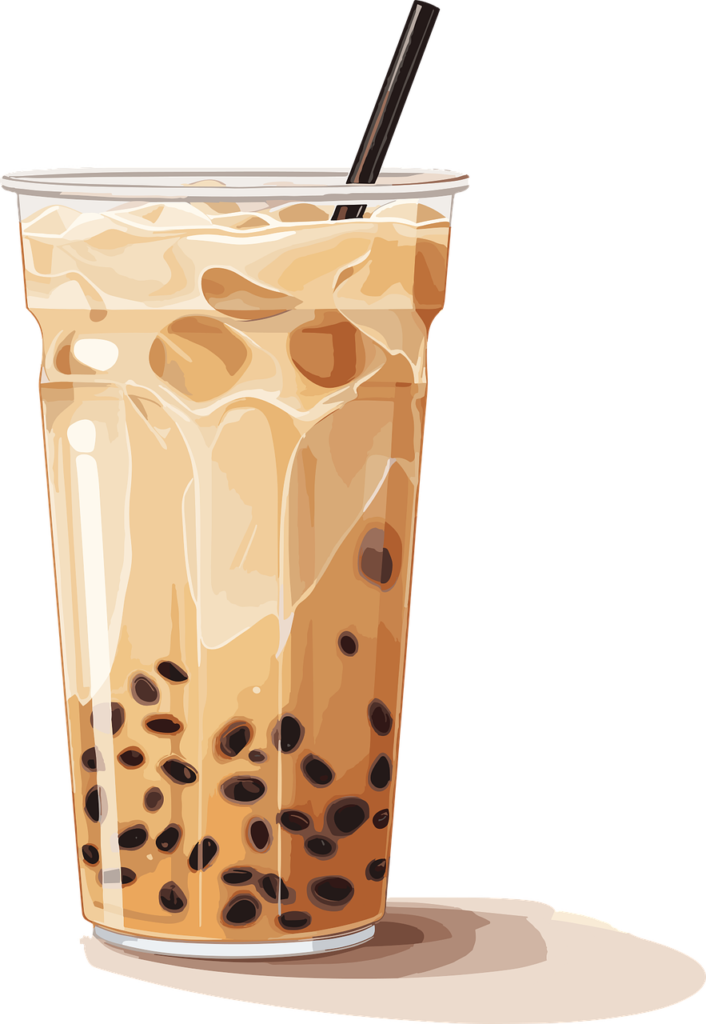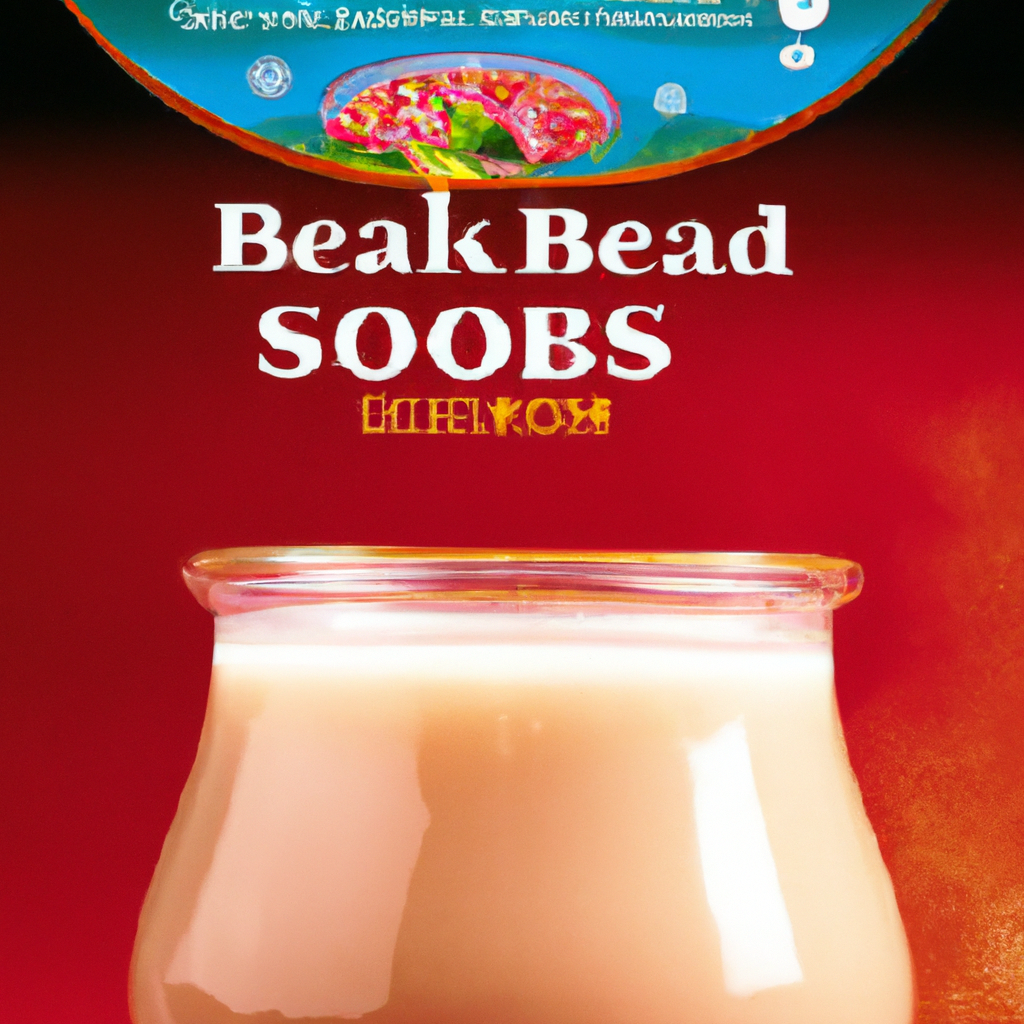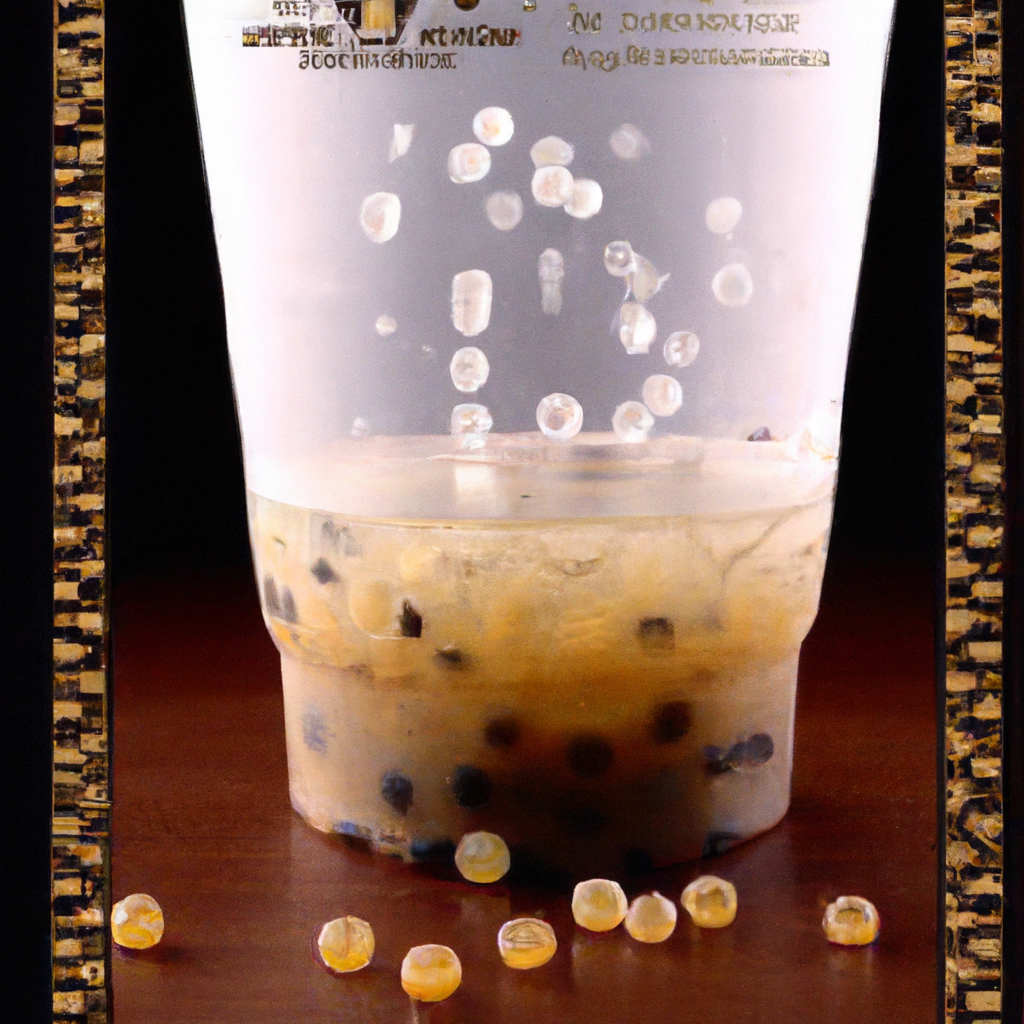Uncovering the Secrets of Boba
Get ready to embark on a delightful journey as we peel back the layers of mystery surrounding the beloved beverage known as boba. Known for its enticing flavors and chewy textured pearls, boba has taken the world by storm. In this article, we will uncover the secrets behind boba’s creation, explore its diverse range of flavors, and delve into its cultural significance. Brace yourselves for an enlightening adventure that will leave you craving a refreshing cup of this delightful concoction.

The Origin of Boba
The History of Boba
Boba, also known as bubble tea, originated in Taiwan in the 1980s. It was first created by a tea shop owner named Liu Han-Chieh, who wanted to offer something different to his customers. He experimented by adding tapioca pearls, also known as boba, to his tea, and the result was a delightful and unique beverage that quickly became popular.
Traditional Ingredients and Preparation
Traditional boba consists of three main components: tea, milk, and tapioca pearls. The tea used can vary, with popular choices being black tea, green tea, or oolong tea. The tea is brewed and then mixed with milk, giving it a creamy and slightly sweet flavor. Tapioca pearls, the signature element of boba, are made from the starch extracted from cassava root. These small, chewy pearls are cooked in boiling water until they reach a soft and gummy consistency, then added to the tea and milk mixture.
Introduction to Different Types of Boba
As boba gained popularity, variations and adaptations of the drink emerged. Today, there are countless types of boba available, catering to different tastes and preferences. Some popular variations include fruit-flavored boba, where fresh or flavored syrups are added to the tea and milk mixture, creating a fruity twist. Other variations include adding toppings like grass jelly, pudding, or aloe vera, which add texture and flavor to the drink. These different types of boba offer a diverse range of options for boba enthusiasts to explore and enjoy.
The Popularity of Boba
Boba as a Global Trend
In recent years, boba has become a global phenomenon, enjoyed by people of all ages and backgrounds. From its humble origins in Taiwan, boba has spread to various countries around the world, captivating the taste buds of millions. It has become particularly popular in Asian communities, but its appeal has extended far beyond. Boba shops can now be found in major cities across the globe, showcasing the international reach and popularity of this unique drink.
The Rise of Bubble Tea Shops
Bubble tea shops, specialized venues that focus on serving boba and other tea-based beverages, have become a common sight in many cities. These shops offer a wide variety of boba flavors, toppings, and customization options, allowing customers to create their perfect drink. The rise of bubble tea shops has not only contributed to the popularity of boba but has also created a vibrant and welcoming environment where boba lovers can gather and indulge their passion for this delightful beverage.
Social Media and Boba Culture
Another factor that has played a significant role in the popularity of boba is social media. Platforms like Instagram and TikTok have become havens for boba enthusiasts, who share their love for this drink through visually appealing photos and videos. Creative boba creations and aesthetically pleasing boba shops have become viral sensations, attracting a new generation of boba lovers. Social media has not only contributed to the growth of boba culture but has also connected boba enthusiasts from all corners of the world, creating a global community bound by their love for this unique beverage.
Health Benefits of Boba
Nutritional Value of Boba
While boba is undoubtedly a tasty treat, it also offers some nutritional benefits. Tapioca pearls, the key ingredient in boba, provide a source of carbohydrates, which are essential for energy production. Additionally, boba made with tea offers the health benefits associated with tea consumption, such as antioxidants and potential protective effects against certain diseases. However, it’s important to note that boba drinks can also be high in calories and sugar, particularly if sweetened syrups or additional toppings are added. Moderation and mindful choices are key when considering the nutritional value of boba.
Healthier Alternatives in Boba Drinks
For those looking to enjoy boba while maintaining a healthier lifestyle, there are options available. Many bubble tea shops offer alternatives to traditional dairy milk, such as almond milk or soy milk, for those with dietary restrictions or preferences. Additionally, customers can choose lower-sugar or sugar-free options, or opt for less sweetening syrup in their boba drinks. By making small adjustments and being mindful of ingredient choices, individuals can enjoy their favorite boba while still prioritizing their health and well-being.
Boba as a Source of Antioxidants
One of the notable health benefits of tea-based boba is its potential antioxidant content. Tea, particularly green tea, contains polyphenols, a type of antioxidant that can help protect cells from damage caused by free radicals. These antioxidants have been linked to numerous health benefits, including reduced risk of chronic diseases and improved overall well-being. While the exact antioxidant content of boba may vary depending on the type of tea used and the brewing method, incorporating tea-based boba into one’s diet can be a delicious way to boost antioxidant intake.
Boba Variations around the World
Unique Boba Flavors in Different Countries
As boba has gained popularity globally, it has been adapted and infused with unique flavors in different countries. In Japan, matcha boba has become a popular choice, where the earthy and vibrant flavor of matcha green tea is combined with the chewy tapioca pearls. In Thailand, Thai milk tea boba is a favorite, offering a rich and fragrant blend of black tea, condensed milk, and boba pearls. Each country has put its own twist on boba, resulting in a fascinating array of flavors and combinations to explore.
Regional Specialties
Within countries, different regions often have their boba specialties, showcasing the diversity and creativity within boba culture. For example, in Taiwan, where boba originated, Tainan is known for its sesame boba, which combines the nutty flavor of sesame with the sweetness of boba pearls. In the United States, California is often regarded as a hub for unique boba creations, with shops offering innovative flavors like lavender boba or even savory boba-infused drinks. Exploring regional specialties allows boba enthusiasts to discover new and exciting variations within their own countries.
Innovative Boba Creations
Alongside traditional and regional boba flavors, innovative creations continue to push the boundaries of what boba can be. From fruity boba drinks with a burst of flavor to boba-infused ice cream or even boba-filled pastries, the possibilities seem endless. Boba enthusiasts and tea shops are always experimenting with new combinations and techniques, resulting in one-of-a-kind boba creations that take the drink to new heights. These innovations ensure that there is always something exciting and unexpected for boba lovers to try and enjoy.

Making Boba at Home
Essential Equipment and Ingredients
Making boba at home requires a few essential equipment and ingredients. Firstly, tapioca pearls are a fundamental component and can be found in most Asian grocery stores or online. Additionally, having a stock of tea, whether it be black, green, or oolong, allows for flexibility in creating different boba flavors. Milk or alternative milk options are also needed to achieve the creamy and rich texture. Other optional ingredients include sugar or sweeteners, flavored syrups, and toppings like grass jelly or pudding. And of course, don’t forget the necessary cooking utensils such as a pot, strainer, and a large bowl for preparation.
Step-by-Step Boba Cooking Instructions
Cooking tapioca pearls to perfection requires attention to detail, but with some practice, it can be easily mastered at home. First, bring a pot of water to boil, ensuring there is enough water to fully submerge the pearls. Once boiling, add the tapioca pearls and stir to prevent them from sticking together. Let the pearls simmer for the recommended cooking time, usually around 10 to 15 minutes. The pearls should be soft with a slightly chewy texture. After cooking, drain the pearls with a strainer and rinse them with cold water to remove excess starch. The pearls can then be added to a prepared tea and milk mixture, and the boba is ready to be enjoyed.
Creative Boba Recipes to Try at Home
While the classic boba recipe is beloved by many, there are endless possibilities for creating unique and creative boba drinks at home. One idea is to experiment with different fruit combinations, such as blending fresh strawberries with tea and adding boba pearls for a refreshing and fruity twist. For those with a sweet tooth, a cookies and cream boba can be made by blending crushed cookies with milk and adding boba pearls for a decadent treat. The beauty of making boba at home is the freedom to tailor the flavors and ingredients to personal preferences, allowing for limitless creativity and enjoyment.
The Art of Boba Making
The Skill and Precision in Boba Production
Boba making is not just a simple process but an art that requires skill and precision. From measuring the right quantities of tea, milk, and sweeteners to achieving the perfect cooking time and consistency of the tapioca pearls, there is a delicate balance that boba artisans strive for. The mastery of these techniques requires practice and experience, and great boba makers take pride in their ability to consistently create an exceptional and delightful beverage for their customers.
The Role of Boba Artisans
Boba artisans play a crucial role in the boba industry, with their expertise and creativity shaping the world of boba. These skilled individuals are passionate about their craft and continuously strive to perfect their techniques and develop new flavors and combinations. They take pride in elevating boba to an art form and ensuring that every cup of boba is a treat for the senses. The dedication and innovation of boba artisans help to maintain and further the popularity of this beloved drink.
The Science Behind Boba’s Texture
The unique texture of boba pearls is a result of the chemical and physical processes involved in their preparation. Tapioca pearls are made from cassava starch, a type of hydrocolloid that can absorb and retain water, giving the pearls their characteristic chewiness. The cooking process involves heat and moisture, which gelatinize the starch and create a desirable texture. Understanding the science behind the gelatinization process allows boba makers to achieve the ideal consistency and mouthfeel of the pearls, ensuring that each sip of boba is a delightful sensory experience.

Boba Etiquette and Traditions
Cultural Significance of Boba
Boba has not only become a popular beverage but also holds cultural significance in many communities. It serves as a symbol of cultural identity and tradition, particularly in Taiwan where it originated. Boba shops can be seen as community gathering places, where people come together to enjoy a shared love for this beloved drink. Boba also holds nostalgic value for many, evoking memories of childhood or cultural heritage. Recognizing and appreciating the cultural significance of boba helps foster a deeper connection and understanding of this beloved beverage.
Proper Boba-Drinking Etiquette
While there are no strict rules when it comes to enjoying boba, there are some general etiquettes that can enhance the overall experience. It is customary to use a wide straw when drinking boba to ensure the tapioca pearls can pass through easily. It is also polite to finish the pearls before finishing the drink to fully appreciate their texture and flavor. Many boba enthusiasts also enjoy shaking or swirling their cup before taking a sip to mix the flavors and incorporate the pearls throughout. These etiquettes, though not mandatory, can add an extra layer of enjoyment to the boba-drinking experience.
Boba-Related Festivals and Celebrations
Boba’s popularity has led to the emergence of festivals and celebrations dedicated to this beloved beverage. These events often feature a variety of boba flavors and creations, along with live performances, competitions, and workshops. Boba enthusiasts from all walks of life come together to celebrate their mutual love for this unique drink, fostering a sense of community and camaraderie. These festivals and celebrations are not only a testament to the enduring popularity of boba but also an opportunity to experience the joy and vibrancy of the boba culture.
Boba’s Influence on Culinary Trends
Boba-Inspired Desserts and Snacks
The influence of boba extends beyond the realm of beverages, inspiring creative dessert and snack creations. Boba pearls have been incorporated into cakes, ice creams, and even pastries, adding a delightful chewy texture and a burst of flavor. Boba-inspired desserts and snacks allow individuals to enjoy the unique characteristics of boba in different culinary contexts, expanding the creativity and versatility of this beloved ingredient.
Boba-Flavored Products
The popularity of boba has also led to the creation of various boba-flavored products. Boba-inspired candies, chocolates, and even flavored powders have emerged, allowing individuals to enjoy the essence of boba in different forms. These products offer a convenient way for boba enthusiasts to indulge in their favorite flavor even when they are not able to visit a boba shop. The proliferation of boba-flavored products showcases the influence and enduring appeal of this beloved beverage.
Boba’s Impact on Fusion Cuisine
Boba’s unique flavor and texture have also found their way into fusion cuisine, where traditional recipes are combined with modern influences. Boba-infused cocktails, for example, combine the delightful chewiness of boba pearls with the flavors of different alcoholic beverages, resulting in a unique and refreshing drink. The versatility of boba allows it to be seamlessly incorporated into various culinary traditions, creating innovative and exciting fusion dishes that push the boundaries of traditional cuisine.

Controversies Surrounding Boba
Environmental Concerns
One of the major controversies surrounding boba is its impact on the environment. The widespread use of single-use plastic cups and straws in boba shops has raised concerns about plastic pollution and its detrimental effects on ecosystems. In recent years, efforts have been made to address these concerns, with many shops switching to alternative eco-friendly materials or offering incentives for customers to use reusable containers. The ongoing conversation about sustainability in the boba industry highlights the importance of finding environmentally responsible solutions while still preserving the enjoyment of this beloved drink.
Sugar Content and Health Implications
The high sugar content of boba drinks has also been a topic of concern. Many commercially available boba drinks are loaded with sugar, contributing to excessive calorie intake and potential health risks such as weight gain and increased risk of chronic diseases. It is essential for individuals to be mindful of their sugar consumption when enjoying boba and consider healthier alternatives or moderation. The growing demand for lower-sugar options in the industry demonstrates an awareness of these health implications and the need for more balanced choices.
Cultural Appropriation Debates
As boba has gained popularity outside of its cultural origins, debates surrounding cultural appropriation have emerged. Some argue that the widespread adoption and adaptation of boba by different cultures can dilute or misrepresent its original significance. It is crucial to approach the topic with sensitivity and respect, recognizing and appreciating the cultural roots of boba while also embracing its ability to bring people together and celebrate diversity. Engaging in open and respectful conversations can lead to a better understanding of the complexities surrounding cultural appropriation and foster a more inclusive boba culture.
Exploring the Future of Boba
Innovations in Boba Technology
As boba continues to captivate the taste buds of people around the world, innovations in boba technology are expected to emerge. From automated tapioca pearl cookers to advanced tea brewing techniques, technology can streamline and enhance the boba-making process. These innovations not only increase efficiency but also open up possibilities for new flavors, textures, and experiences, ensuring that the world of boba continues to evolve and surprise enthusiasts in the years to come.
Changing Consumer Preferences
The preferences and tastes of consumers are ever-evolving, and the world of boba is not exempt from these changes. As people become more health-conscious and environmentally aware, the demand for healthier and eco-friendly boba options is likely to increase. Additionally, adventurous consumers may continue to seek out new and unique flavor combinations, pushing boba creators to experiment and innovate. The future of boba will be shaped by the dynamic relationship between consumer preferences and the industry’s ability to adapt and cater to those preferences.
Boba’s Role in Future Beverage Trends
In an era of innovative and ever-changing beverage trends, boba is expected to continue playing a prominent role. The enduring popularity of this unique drink, combined with its ability to be adapted and infused with different flavors and techniques, ensures its relevance in the beverage landscape for years to come. Whether it be through new boba creations, cross-cultural fusion, or its impact on the sustainability movement, boba’s influence is set to shape future beverage trends and captivate the taste buds of generations to come.
In conclusion, boba has come a long way since its humble origins in Taiwan. From its diverse flavors and variations to its cultural significance and global popularity, boba continues to captivate the taste buds and hearts of millions around the world. Whether enjoyed at a local bubble tea shop or made with love at home, boba remains a delightful and cherished beverage that brings people together. As the future unfolds, boba enthusiasts can look forward to exciting innovations and new horizons for this beloved drink, ensuring that its journey continues to evolve with the ever-changing tastes and preferences of its dedicated fans.


